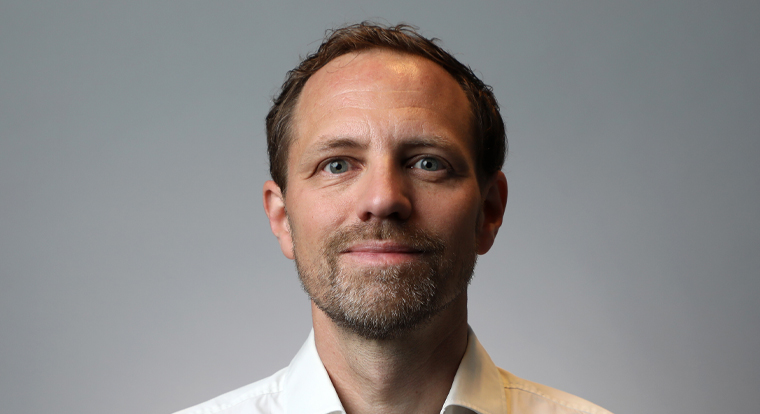Bringing CfH into the mainstream
- 21 July 2005
 Jon Hoeksma
Jon Hoeksma
In an exclusive interview with E-Health Insider, Richard Jeavons, director of IT service implementation at the Department of Health, outlines how he wants to focus clearly on implementation and ensure that the NHS National Programme for IT (NPfIT) becomes firmly fixed at the centre of the strategic modernisation agenda of trust boards and senior health service executives.
Richard Jeavons, the Department of Health’s first ever director of IT service implementation, is a man with a mission: to move the NHS IT modernisation programme into the NHS mainstream and fully connect it with the NHS strategic modernisation agenda.
Although only in post six weeks, Jeavons has already helped secure a vital move to ensure taking the new IT systems is not optional. In June the DH wrote to NHS leaders detailing how taking new systems will become part of the DH’s "mainstream" performance management. "We have got to get people to see this as an enabling programme to our wider ambitions, because that’s where you get buy in," Jeavons told EHI.
Jeavons, who was previously Senior Responsible Owner for the North East Cluster of CfH and chief executive of West Yorkshire Strategic Health Authority, says tight performance management will be essential: "The loop between implementation and mainstream performance management has now been closed which will help us move from large scale national procurement to large scale, consistent deployment."
|
"Addressing [NPfIT] as part of your improvement plans and local delivery plan is non-negotiable" — Richard Jeavons, director of IT service implementation, Department of Health
|
Making IT matter
He told EHI that the move was essential to end the perception that delivery of the programme was someone else’s concern, and part of bringing together all the levers, incentives and opportunities needed to ensure success.
"That means moving it into the mainstream of the DH’s delivery agenda, which means putting it firmly on the list of things that will be performance managed, straight down the local delivery planning route and getting that tied up with the financial envelopes."
Asked whether this could ultimately mean that NHS chief executives losing their jobs if they fail to implement systems, he said: "I don’t see it as a destination that’s likely or being aimed for, but on the other hand it’s unequivocal that NPfIT is now firmly in the middle of the radar screen as one of the key enablers to deliver the rest of the NHS’s agenda – and addressing that as part of your improvement plans and local delivery plan is non-negotiable."
Jeavons’ central challenge is to bring the programme into the mainstream, ensuring NHS leaders place NPfIT within its broader strategic context. "The context of this programme is really important. It’s an enormous programme in its own right, but it’s fundamentally an enabling programme with a much more wide ranging set of ambitions for the NHS.”
Ensuring people understand that NHS IT modernisation is not a backroom activity requires CFH to be brought within the mainstream of the NHS. "So CfH feels owned by the NHS and visa versa,” says Jeavons.
Understanding the necessity of IT
Another vital part of his role is to ensure engagement with the health service, including managing the work of the clinical leads. The challenge here he says is "engaging and involving the NHS in the challenges and the opportunities of the programme in that wider context of what we are trying to achieve for patients”.
He adds that the biggest immediate hurdle he faces is getting the leaders of all health communities and local NHS organisations to understand that the new IT systems on the way will be fundamental to delivering service modernisation and improvement. The current position he says is "very mixed".
"Some health communities have got a terrific fix on how this is really going to help them, and I can go to other places where they haven’t engaged with the opportunity and haven’t reached the level of understanding and comfort about how this can help."
The challenge, he says, is to help those places that haven’t yet got this understanding. "We need boards, non-exec directors and senior executives such as chief executives to feel confident that they know how this opportunity can really help them deliver their wider agenda."
Jeavons stresses that there are already plenty of role models and examples of sites that have implemented systems and delivered benefits. "The benefits are there, so its not as if we are trying to do something that can’t be done so we have to find a device for moving that understanding around."
He adds that he did not believe getting people to understand the need to implement new IT systems would ultimately prove a problem, as better information flow and quality of data were vital to the main tenets of NHS modernisation: be it system reform, empowering patients or raising the quality of services across all providers to the NHS.
"Fundamentally that high level of strategic understanding – that this needs to be done – can be relatively easily planted in the right heads," says Jeavons. He adds his job will be to provide the necessary leadership.
"Closing the gap in the understanding of what is the opportunity that has been created by the procurement to landing the opportunity in my local organisation. That is the connection we have to make."
Local understanding
Jeavons says that delivery will entirely depend on the commitment and leadership of local NHS organisations and health communities. "A national implementation team when you are potentially doing thousands of implementations at sites across England doesn’t sound to me like a practical proposition."
|
"It’s remarkable how some places have got their heads around this, sometimes in the absence of what you might think are critical pieces of information." — Richard Jeavons
|
Therefore, implementation capacity must be built locally, says the DH director. "That’s really got to be the focus of our implementation planning and resourcing. It’s also where the resources are. Most of the money in the NHS goes straight down to local PCTs and their local trusts."
One prerequisite in building local understanding, commitment and capacity he says will be to ensure that there is “complete role clarity” for CfH, the clusters, the SHAs, NHS trusts, PCTs and communities and what they are expected to do “with what resources, in what order”.
Asked whether he believes this level of clarity yet exists, Jeavons says that while it could probably could be distilled. "I think there’s a little bit of work to do to just get that distillation, and that’s obviously one of the things I’ll be concentrating on off the back of very clear message that this is in mainstream planning.”
“We have to back that up with clarity on who should do what with what and that’s a piece of work we’re beginning. It’s a patchwork quilt.”
Planning and relationships
While he says there is pretty good clarity in some parts of England he concedes that in other places "it’s still foggy".
"There are undoubtably gaps in the information people would like to do good planning," acknowledges Jeavons. "But it’s also remarkable how some places have got their heads around this, sometimes in the absence of what you might think are critical pieces of information."
Asked how NHS organisations in the South of England can plan when their main product supplier has suddenly been replaced and delivery timetables effectively torn up, he says: "One of the key dependables in implementation planning though will be product delivery."
The DH director stressed the need for long term relationships with suppliers and spoke highly of Accenture’s [the LSP in North East] grasp on this vital point. “It’s so easy to move to a position where what should be a really open, collaborative transparent, long-term partnership, turns into a short-term cross shop activity.
"This is not a sprint this is a marathon, and one thing about a marathon is to take it at the pace you think you can do the whole thing and not waste unnecessary energy including mental and emotional energy."
Jeavons concludes: "We simply haven’t got the time to go round and round getting emotional about this. We have to align all the resources, all the skills, including suppliers, and be tough and rigorous together in spirit of long-term partnerships together.”




